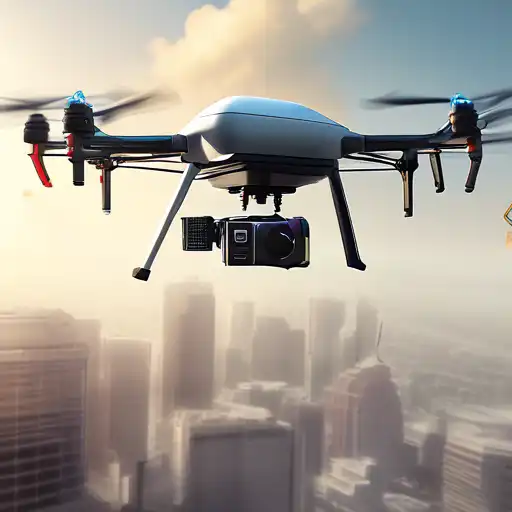The Rise of Commercial Drones
Commercial drones, also known as unmanned aerial vehicles (UAVs), have surged in popularity across various industries. From agriculture to real estate, these flying devices offer unparalleled opportunities for businesses to enhance efficiency, reduce costs, and improve safety.
Opportunities Unleashed by Commercial Drones
The applications of commercial drones are vast and varied. In agriculture, drones are used for crop monitoring and spraying, significantly reducing the need for manual labor. In construction, they provide aerial surveys and inspections, saving time and resources. The film and photography industry benefits from drones by capturing stunning aerial shots that were once impossible or too expensive to achieve.
- Agriculture: Crop monitoring, spraying, and health assessment.
- Construction: Site surveys, progress tracking, and safety inspections.
- Real Estate: Aerial photography and virtual tours of properties.
- Delivery Services: Fast and efficient package delivery, especially in remote areas.
Navigating the Regulatory Framework
Despite their potential, commercial drones operate within a complex web of regulations. In the United States, the Federal Aviation Administration (FAA) mandates that commercial drone operators obtain a Part 107 certification. This ensures that operators understand airspace rules, safety protocols, and privacy concerns.
Internationally, regulations vary significantly. The European Union Aviation Safety Agency (EASA) has established a unified framework for drone operations across member states, focusing on safety and privacy. Meanwhile, countries like Canada and Australia have their own sets of rules, often requiring registration and adherence to specific operational guidelines.
Challenges and Considerations
While the opportunities are immense, challenges remain. Privacy concerns top the list, as drones can easily capture images and videos without consent. Safety is another critical issue, with the potential for drones to interfere with manned aircraft or cause accidents in populated areas.
To mitigate these risks, businesses must stay informed about the latest regulations and invest in training for their drone operators. Additionally, adopting best practices for privacy and safety can help maintain public trust and ensure the sustainable growth of the commercial drone industry.
The Future of Commercial Drones
As technology advances, the capabilities of commercial drones will continue to expand. Innovations in battery life, autonomous flight, and payload capacity will open new avenues for their use. Moreover, as regulatory bodies refine their frameworks, the integration of drones into national airspace systems will become smoother, further boosting their commercial viability.
For businesses looking to leverage this technology, the time is now to explore the opportunities and navigate the regulatory landscape. By doing so, they can position themselves at the forefront of this transformative wave.
For more insights into how technology is shaping industries, check out our latest articles on technology trends.
